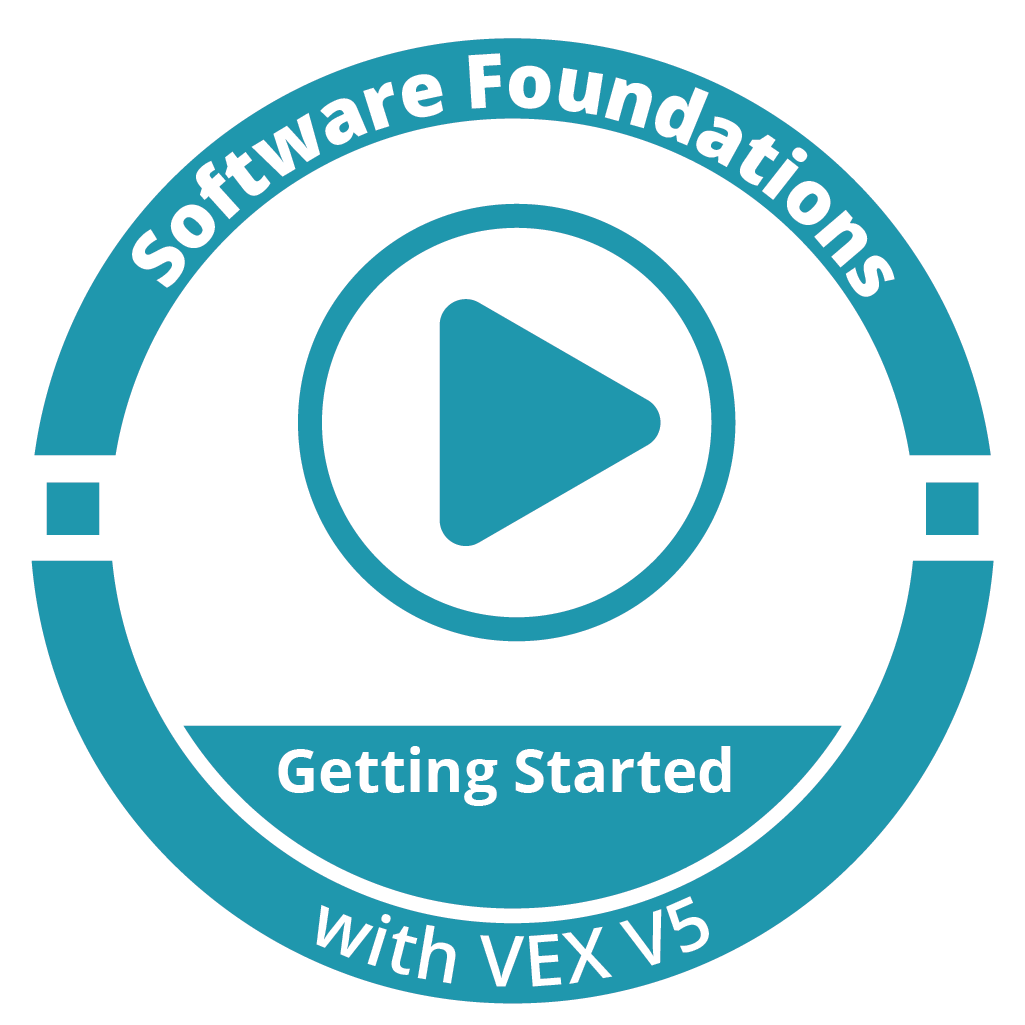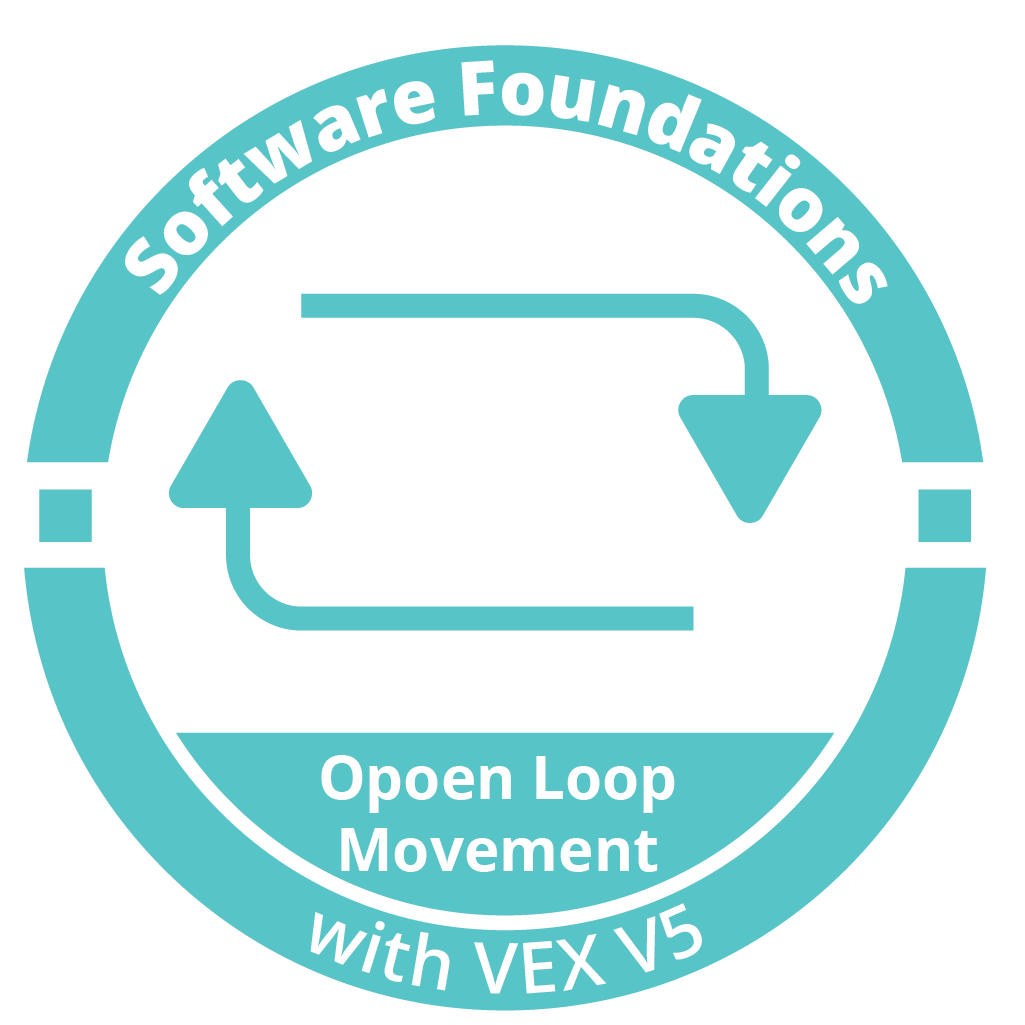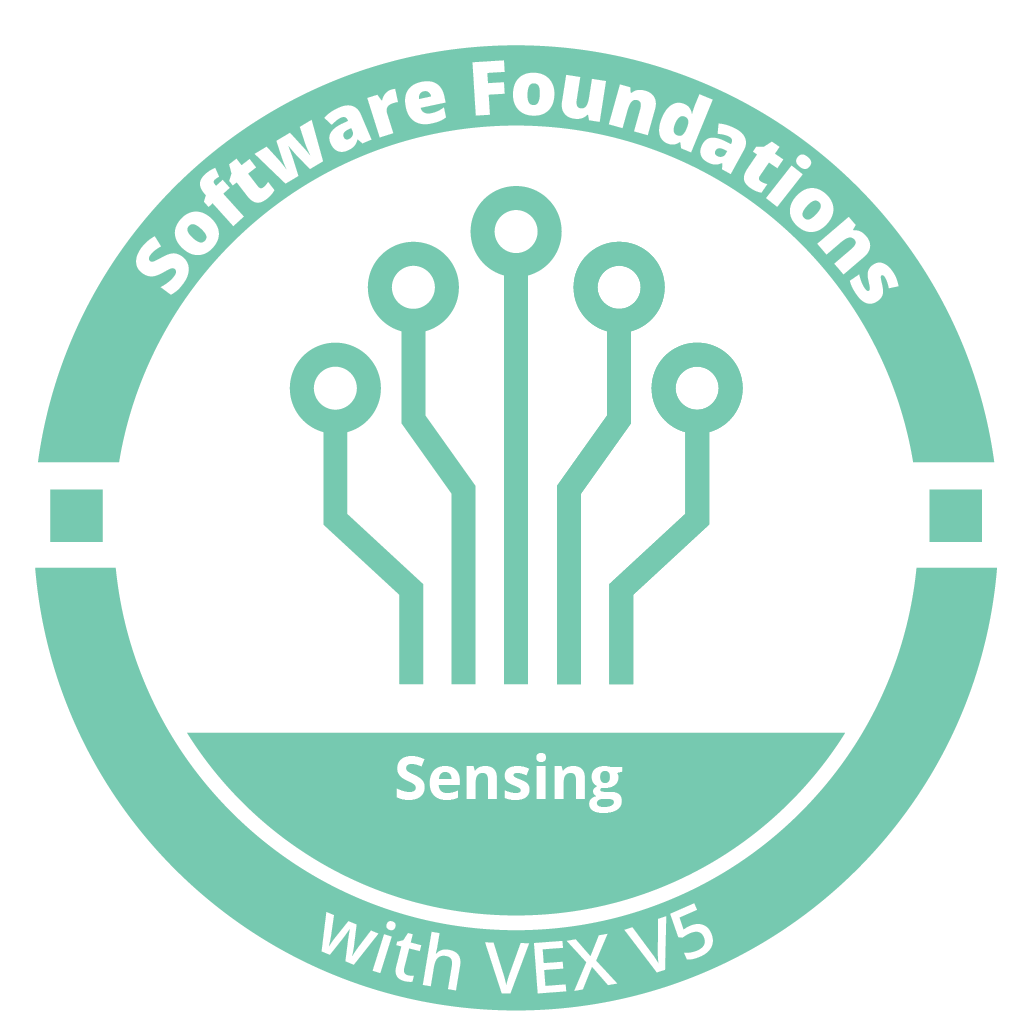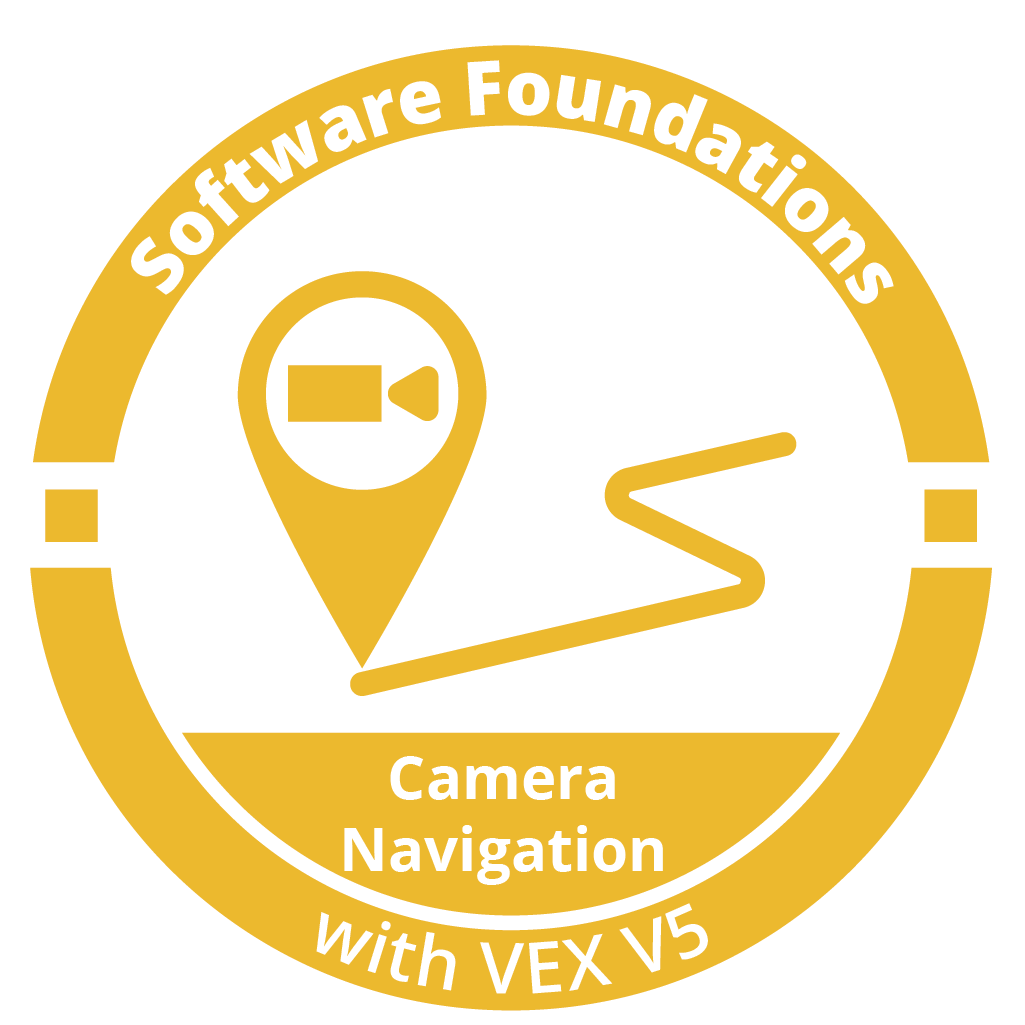
Software Foundations with VEX V5
The Software Foundations with VEX V5 focuses on introducing programming concepts using the VEX V5 robotics platform. Throughout this course, students go through the robotics engineering process through repeated planning, testing, and iteration throughout the units. Students also learn basic robot movement with the V5 robot, use feedback from different kinds of sensors, create complex programs using loops and decision-making logic, and program the robot to use its vision sensor (camera).
This curriculum includes videos, animations, and step-by-step lessons designed to help learners understand introductory Software concepts as part of the SMART program. The course utilizes the VEXcode programming software to perform behaviors with the robot.
Curriculum Unit Overview
Unit 1: Getting Started with VEX V5 Software Foundations
 |
In this unit, students are asked to take inventory of the parts that are available in a kit. Students must keep track of progress using a checklist, and perform a series of tests with the system to ensure proper functionality. |
Unit 2: Open Loop Movement with VEX V5
 |
In this unit, students learn to test each robotic system by running basic movement programs on the robot. |
Unit 3: Sensing with VEX V5
 |
This unit introduces students to sensors: A Distance Sensor, and an Optical Sensor. Students will learn how to integrate the sensors with the V5 Clawbot, and then program the robot to sense its environment. Students will learn programming concepts along the way like wait until commands, if/else structures, and loops. |
Unit 4: Camera Navigation with VEX V5
 |
In this unit, students learn to implement a vision-based system that provides navigation abilities, based on color, objects, and shapes. |
Training and Certification
Robotics is a powerful STEM organizer that allows for a diverse set of subjects to be integrated and taught in a rich context. Whether you’re a formal education teacher, an informal education facilitator, or a competition coach, if you’re looking to reach the most valuable and transferable learning outcomes with your students through robotics should enroll in the Carnegie Mellon Robotics Academy’s Certified Teacher Training. A certified educator has the opportunity to offer the Carnegie Mellon Robotics Academy certification within their own classrooms and learning environments, providing the students with evidence of their valuable experience that they can showcase.
The training for this course is offered using the VEX V5 Coding and Computational Thinking curriculum, and upon being certified will allow you to teach this course as well as the VEX V5 Coding and Computational Thinking course as well.
- On-site training is conducted at the National Robotics Engineering Center (NREC) in Pittsburgh, PA.
- In Live Online training, educators learn from a Robotics Academy instructor from anywhere in the world through interactive sessions. (Live sessions are recorded)
As part of the training, teachers also learn how to use the CS-STEM Network (CS2N.org) to create “Groups” with their students, track progress, and collect assignments.
Implementation Guidance
Software Foundations with VEX V5 is designed for student self-pacing individually, or in small groups, (preferably pairs). Each individual or group should work together at one computer, with one VEX V5 robot. The exact number of contact hours provided in the curriculum will vary, given the self-paced nature of the materials, along with other factors such as class length and frequency.
One of the biggest challenges facing teachers today is meeting the needs of each individual student in their classroom; that is the core of differentiated instruction. Differentiated instruction asks teachers to approach students at their instructional level, and requires students to show evidence of growth from their instructional level. Differentiated instruction encompasses more than just assessment. It involves all aspects of instruction: classroom delivery, overall learning environment, learning content, and assessment. The curriculum provides many opportunities for students of all abilities.
Curriculum tasks are designed to involve some – but not extensive – mechanical consideration, so that hands-on design tasks may remain authentic without becoming logistically difficult.
A typical plan for a curriculum module is:
- View the introductory video as a class, or in individual groups, then review the challenge(s) for the unit
- In a group, identify and note key capabilities the robot must develop, and problems that must be solved in individual engineering journals or class logs (e.g. on sticky paper posted on the walls)
- Individuals or groups proceed through the materials at their own pace, following the instruction directly, and constructing solutions to the Try It! and Mini-Challenge steps as they go
- Each individual or group constructs its own solution to the Unit Challenge
- Groups may be asked to document their solutions in journals or logs, and especially to explain how they overcame the key problems identified at the start of the unit